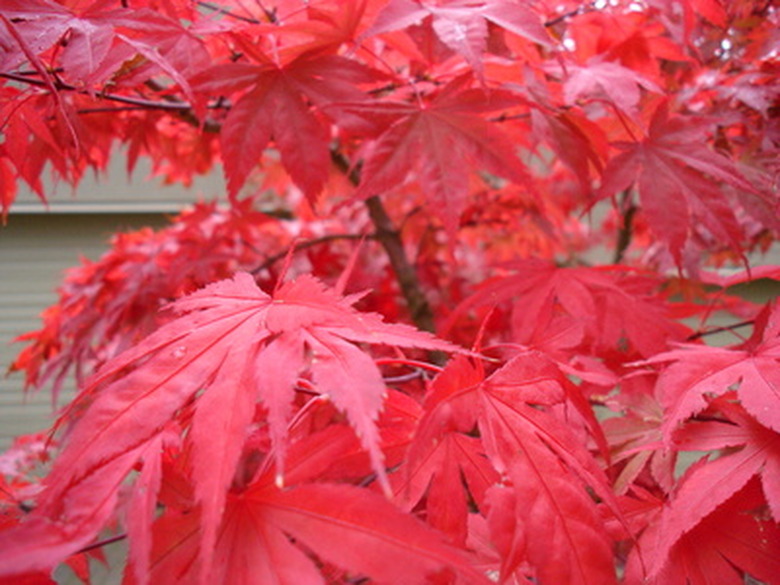Why Is My Japanese Maple Turning Green?
The Japanese maple, or Acer palamtum, is a deciduous tree frequently used as an ornamental for its form and foliage. There are many varieties notable for different growth habits, leaf shape and foliage colors or patterns. It can be frustrating or alarming when a Japanese maple cherished for brilliant, unique coloring begins to turn green. This color change could be caused by a number of factors and may or may not be treatable.
Normal Seasonal Color Change
There are hundreds of Japanese maple cultivars that exhibit great variety in leaf shape, habit and color. Typically, however, Japanese maples showcase their most brilliant colors in spring and fall. Some varieties only experience color change in the fall. So, unless the maple tree is of a specific cultivar that is known to retain its colors through the summer, expect some degree of color change during the hot summer months.
- The Japanese maple, or Acer palamtum, is a deciduous tree frequently used as an ornamental for its form and foliage.
- There are hundreds of Japanese maple cultivars that exhibit great variety in leaf shape, habit and color.
Inadequate Light
Some Japanese maple cultivars that normally feature red leaves can lighten and turn green if they do not receive adequate sunlight. This species prefers full sun to partial shade but certain cultivars are more tolerant of shade than others. If too much shade is an issue, consider transplanting the tree before it becomes quite well-established.
Young and Vigorous
The Texas A&M Extension Service asserts that occasionally young, vigorously growing trees can lose their brilliant colors. When the maple naturally slows its growth rate it may regain its original coloring.
Nutrient Deficiency
A Japanese maple suffering from a nutrient deficiency will typically have yellow or yellow-green leaves with darker veins. The most common deficiency in Japanese maples is manganese. If nutrient deficiencies are suspected, get the soil tested and amend or fertilize it according to results.
- Some Japanese maple cultivars that normally feature red leaves can lighten and turn green if they do not receive adequate sunlight.
- A Japanese maple suffering from a nutrient deficiency will typically have yellow or yellow-green leaves with darker veins.
Loss of Variegation
Even after years of perfect health, care and coloring a variegated Japanese maple can lose its variegation and revert back to its original leaf form or color. This simply means that the tree is a periclinal chimera, a type of layered mutation that is normally stable. However, on rare occasion the desired, variegated anomaly can lose its pattern. The specimen will remain in the same health it was prior to the color change.
Green Stock Tree
Often, a difficult to propagate but desired Japanese maple cultivar will be grafted to the rootstock of a tree with more standard green foliage. This "green" plant base can still send up shoots. If the shoots are not pruned back early, they will leaf out and can eventually dominate over the desired color. Prune any unwanted branches as soon as they are noticed.
- Even after years of perfect health, care and coloring a variegated Japanese maple can lose its variegation and revert back to its original leaf form or color.
- Often, a difficult to propagate but desired Japanese maple cultivar will be grafted to the rootstock of a tree with more standard green foliage.
